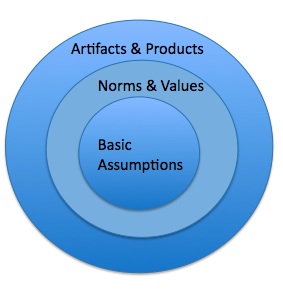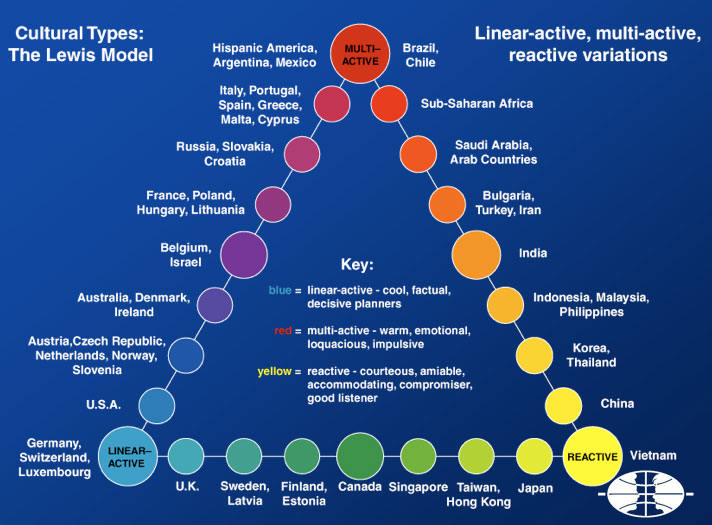Category: Leadership Development
Excellent post on the role of culture in creating a resilient, high performing organization. http://www.tanveernaseer.com/
5 methods for social leadership – try reverse mentoring
Meghan M. Biro – Forbes, adapted ways of mentoring in changing corporate environments.
Perspectives for managers – Ben Bryant
Mindfulness
You must be the change you wish to see in the world – Mahatma Gandhi
Mindful leadership in a multicultural environment – Part II
Before looking into the different aspects of what it means to be a leader in a multicultural environment, what problems can arise and how to solve them, a commonly used term has to be defined. The word ‘culture’ is used in so many ways today but do we really know what lies behind it? In fact, many different definitions exist, depending on the context the word is used in. Geert Hofstede, a well-known Dutch researcher in the field of organisational studies, says the following: culture is “(…) the collective programming of the mind distinguishing the members of one group or category of people from another”. The ‘category’ can refer to nations, regions within or across nations, ethnicities, religions, occupations, organizations, or the genders.”[1]
For my purposes, a definition I find most useful is that of the ‘onion-model’ of culture from Trompenaars. It describes something complex as culture with a simple image, that of an onion, where the outer layer represents behaviours, language, food, clothing etc. of a person; looking more to the inside one can find norms and values. The inner core layer finally, is made of “basic assumptions”[2] like routine actions and beliefs that are deeply rooted inside.  ”Onion Model” of Culture[3]
”Onion Model” of Culture[3]
What this model really shows is that we cannot judge or pretend to understand a person simply from his or her behaviours, clothing and food. There is much more to culture than what we can actually see. Acknowledging this fact and being mindful when being part of or leading international teams, will actually help avoiding misunderstandings and bring clarity. “The first step for leaders is to help all players recognize that there are cultural differences – to recognize their importance and impact”.[4]
Let me give you an example: a simple question at the end of a workshop or meeting like “does everybody understand what the next steps are, i.e. is everything clear” can have a different impact on people with various cultural backgrounds. Whereas in some cultures people are used to ask questions, seek clarification and understanding, in some other cultures admitting that things are not clearly understood is actually considered as ‘losing ones face’; hence there won’t be any questions or signs that some information was missing which for the workshop or meeting leader will be very confusing as he/she will be expecting a certain output. In order to avoid this particular situation, it can be very helpful to have a look at cultural type models, like the “Lewis’ model” to give one example:[5] Although it appears difficult to categorize every single person, this model provides a helpful approach and can already solve many problems before they appear.
Although it appears difficult to categorize every single person, this model provides a helpful approach and can already solve many problems before they appear.
Specialised coaches can of course help navigate the uncertain waters of intercultural management. Part III of this article will look into the difference of intercultural coaching versus coaching in an intercultural management environment as well as highlight the difference between measures on the job and measures off the job. Stay tuned!
[1] From: http://geerthofstede.nl/culture.aspx
[2] See also: F. Trompenaars and P. Woolliams: „Transcultural Competence through 21 Reconciliations“. In: 21 Leaders fort he 21st Century – How innovative Leaders manage in the digital age. Editor. F. Trompenaars and Ch. Hampden-Turner. Oxford 2001, p. 397-398.
[3] In alteration from H. Blom and H. Meier: „Intercultural Management“ (=International Management. Editor. H. Meier). Page 40.
[4] Trompenaars/Woolliams: Transcultural Competence, p. 397
[5] R. Lewis: http://www.crossculture.com/services/cross-culture/; see also: R. Lewis: “When teams collide – Managing the international team successfully”, Nicholas Brealey Publishing, London 2012, p. 13.
What does empathic leadership mean?
Definition from @ftlexicon (Financial Times Lexicon): “Empathic leadership is the ability of leaders to understand, relate to and be sensitive to customers, colleagues and communities. Sociopathic leadership, on the other hand is arrogant, self-centred, insensitive and manipulative.
The empathic leader will try to understand why their customers want to buy into their brand, not simply in a soft, touchy-feely way but literally from their point of view – from standing in their shoes. This brings a powerful and compelling aspect to the design, build and delivery of any product or service, the holy grail of business success and one reason why some brands are market leaders, but most are not.
Empathic leadership is not however, an easy path. For a start it goes against the myth of the hero leader. It’s not about ego, it’s about humility. It’s not about fulfilling personal agendas, it’s about helping customers, colleagues and communities to lead better lives.”
http://lexicon.ft.com/Term?term=empathic-leadership
